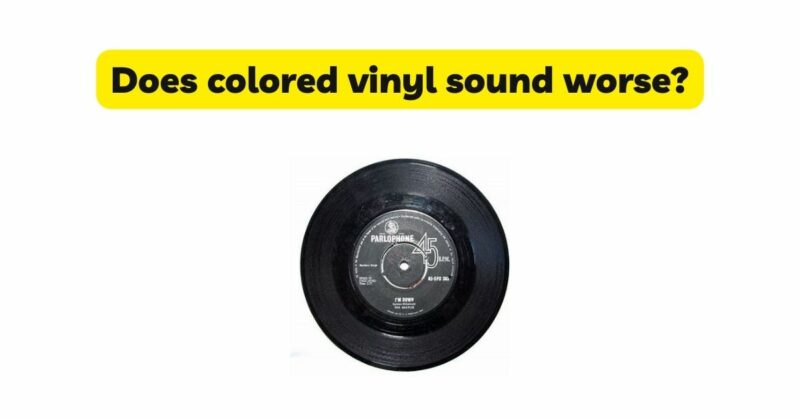Colored vinyl has become a popular trend among vinyl collectors and music enthusiasts. With its vibrant and visually striking appearance, colored vinyl adds an extra layer of excitement and uniqueness to the vinyl experience. However, a debate has emerged regarding the sound quality of colored vinyl compared to traditional black vinyl. In this article, we delve into the question of whether colored vinyl truly sounds worse, exploring the factors that may contribute to any perceived differences and examining the scientific and subjective aspects of listener perception.
Vinyl Composition and Manufacturing Process: Vinyl records are traditionally made from a combination of PVC (polyvinyl chloride) and other additives. The addition of colorants to the vinyl compound can potentially affect the overall composition and properties of the record. It is plausible that the inclusion of pigments in colored vinyl could introduce minor variations in sound quality compared to traditional black vinyl. However, advancements in manufacturing techniques and quality control have minimized any discernible differences between colored and black vinyl.
Sound Quality and Visual Appeal: It is important to differentiate between sound quality and the visual appeal of colored vinyl. The aesthetic enjoyment of owning and collecting colored vinyl is separate from the actual sound reproduction. The choice to purchase colored vinyl often stems from a desire to own a unique and visually appealing item rather than seeking an improved listening experience.
Manufacturing Variations and Quality Control: It is worth noting that variations in sound quality can arise not only from the color of the vinyl but also from the manufacturing process itself. The quality control measures implemented during production, including factors such as mastering, pressing techniques, and record handling, have a more significant impact on sound quality than the color of the vinyl. A well-pressed colored vinyl record produced with attention to detail can sound just as good as its black vinyl counterpart.
Listener Perception and Bias: Listener perception plays a crucial role in shaping opinions about sound quality. The belief that colored vinyl sounds worse may be influenced by preconceived notions, biases, or even placebo effects. Psychological factors, including the power of suggestion and confirmation bias, can influence how listeners interpret and evaluate the sound of colored vinyl. It is important to approach such judgments with objectivity and critical thinking.
Vinyl Record Labels and Pressing Quality: The choice of vinyl record label can also influence the sound quality of colored vinyl. Labels with a reputation for quality control and a commitment to delivering excellent sound reproduction will prioritize the production of high-quality colored vinyl records. Conversely, records from lesser-known labels or those with lower production standards may exhibit variations in sound quality, regardless of the vinyl color.
Playback Equipment and System: The quality of the playback equipment and system used to listen to colored vinyl records significantly impacts sound reproduction. An excellent turntable, cartridge, amplifier, and speakers are essential components that can reveal the nuances and subtleties in any vinyl record, regardless of its color. Investing in high-quality audio equipment will ensure the best possible listening experience, regardless of the color of the vinyl.
Subjective Experience and Personal Preference: Ultimately, the perception of sound quality is subjective and varies from person to person. Some listeners may claim to hear subtle differences between colored and black vinyl, while others may not perceive any noticeable distinctions. Personal preference, emotional connection to the music, and individual listening environments all play a role in shaping the listening experience and overall satisfaction with colored vinyl.
Conclusion: In conclusion, the notion that colored vinyl sounds worse is not entirely supported by scientific evidence or objective analysis. The color of the vinyl itself does not inherently determine sound quality. Other factors, such as manufacturing variations, quality control, playback equipment, and listener perception, have a more significant impact on the overall sonic experience. The enjoyment of colored vinyl records should be primarily derived from their visual appeal and unique aesthetics, rather than any presumed differences in sound quality. Ultimately, it is up to each individual listener to decide whether the charm and visual allure of colored vinyl outweigh any perceived variations in sound quality.


